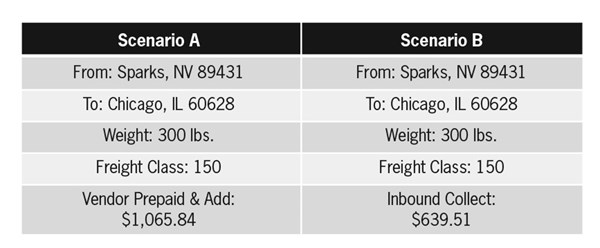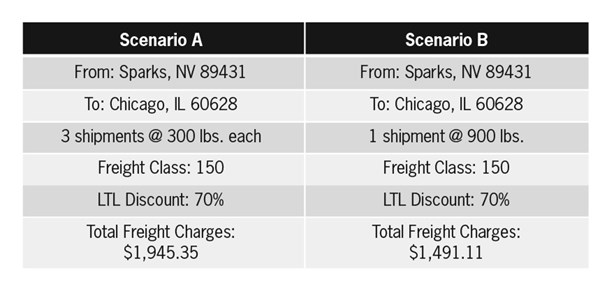4 Ideas to Reduce Shipping Costs
Shipping can be one of the most complicated (and costly) activities for any small business.
Shipping can be one of the most complicated (and costly) activities for any small business. Here are four ideas to consider to reduce your overall shipping costs:
1. Obtain discounts with carriers. Most carriers—whether express, parcel or freight—provide discounts to businesses that routinely ship or receive merchandise. The old adage, “everything is negotiable” is an immutable fact when it comes to shipping fees. The challenge, however, for small businesses is how to go about obtaining the same, steep discounts normally reserved for large businesses and heavy freight shippers.
One approach is to work directly with a third-party logistics provider (3PL), or even directly with your carriers, to see if you can get better discounts than you currently have. Often, if you simply ask for better pricing, you will get it because 3PLs and carriers are always looking to retain and grow their business. Be prepared to share example shipping invoices or manifests with your 3PL or carrier to help them best assess your shipping patterns and provide you with the best pricing. PartnerShip, the company that
manages the PMPA Shipping Program, provides PMPA members with a free shipping analysis service, available at PartnerShip.com/Analysis, to help them through
this process.
2. Develop an inbound shipping management program. One of the simplest and easiest ways to immediately cut your inbound freight costs is to change your shipping terms from “prepaid and add” to “inbound collect.” Having your vendor or supplier ship collect on your recommended carrier eliminates any handling charges, thus saving
you money.

In general, there are many benefits to having your inbound shipments routed collect. As the example above shows, it often saves a lot of money. But even if you don’t have shipping discounts that are better than your vendor, their handling mark-up could still make the overall shipping costs higher than your own.
3. Use the correct mode and service level. A common dilemma for small businesses is deciding the appropriate shipping mode to use for important shipments. Shipping mode choices include LTL freight, small package, ground, air, ocean, rail, intermodal and others. When deciding whether to use a small package or LTL freight carrier, for example, shippers must take into consideration the weight and characteristics of the shipment, the shipment destination (such as business, residence, and so on), service needs, pricing and fees, and loss or damage concerns.

The table above illustrates an example shipment of varying sizes moving across three different shipping modes. Each mode carries with it a certain level of cost, speed and liability protection. Choosing the right mode will help your business maximize shipping costs and customer satisfaction.
4. Consolidate orders when possible. As a general rule of thumb, one big order ships for less than three smaller orders. That means small businesses should consider consolidating multiple orders into a single shipment whenever possible, and always strive to minimize the number of packages it sends. Often, shipments are arranged as they come in from sales or order processing. However, a little planning and visibility goes a long way toward shipping savings as the table shows.
Consolidating orders provides additional benefits to both shippers and receivers of small package and freight shipments, including:
• Reduced shipping supply expenses
• Greater fuel efficiency (better on the environment)
• Less time needed to receive, handle and restock orders
Shipping is an important cost factor for any small business that ships or receives materials or merchandise. It is often possible to reduce these costs with a little planning and effort. Utilizing some or all of these four tips to control shipping costs can eliminate the strain shipping expenses put on your business.

Brought to you by PartnerShip, the company that manages the PMPA Shipping Program and recent recipient of NASTC’s “Best Broker” status. For more information or to enroll, visit PartnerShip.com/28PMPA, email sales@PartnerShip.com.
Read Next
A Tooling Workshop Worth a Visit
Marubeni Citizen-Cincom’s tooling and accessory workshop offers a chance to learn more about ancillary devices that can boost machining efficiency and capability.
Read MoreDo You Have Single Points of Failure?
Plans need to be in place before a catastrophic event occurs.
Read More5 Aspects of PMTS I Appreciate
The three-day edition of the 2025 Precision Machining Technology Show kicks off at the start of April. I’ll be there, and here are some reasons why.
Read More

















.png;maxWidth=970;quality=90)